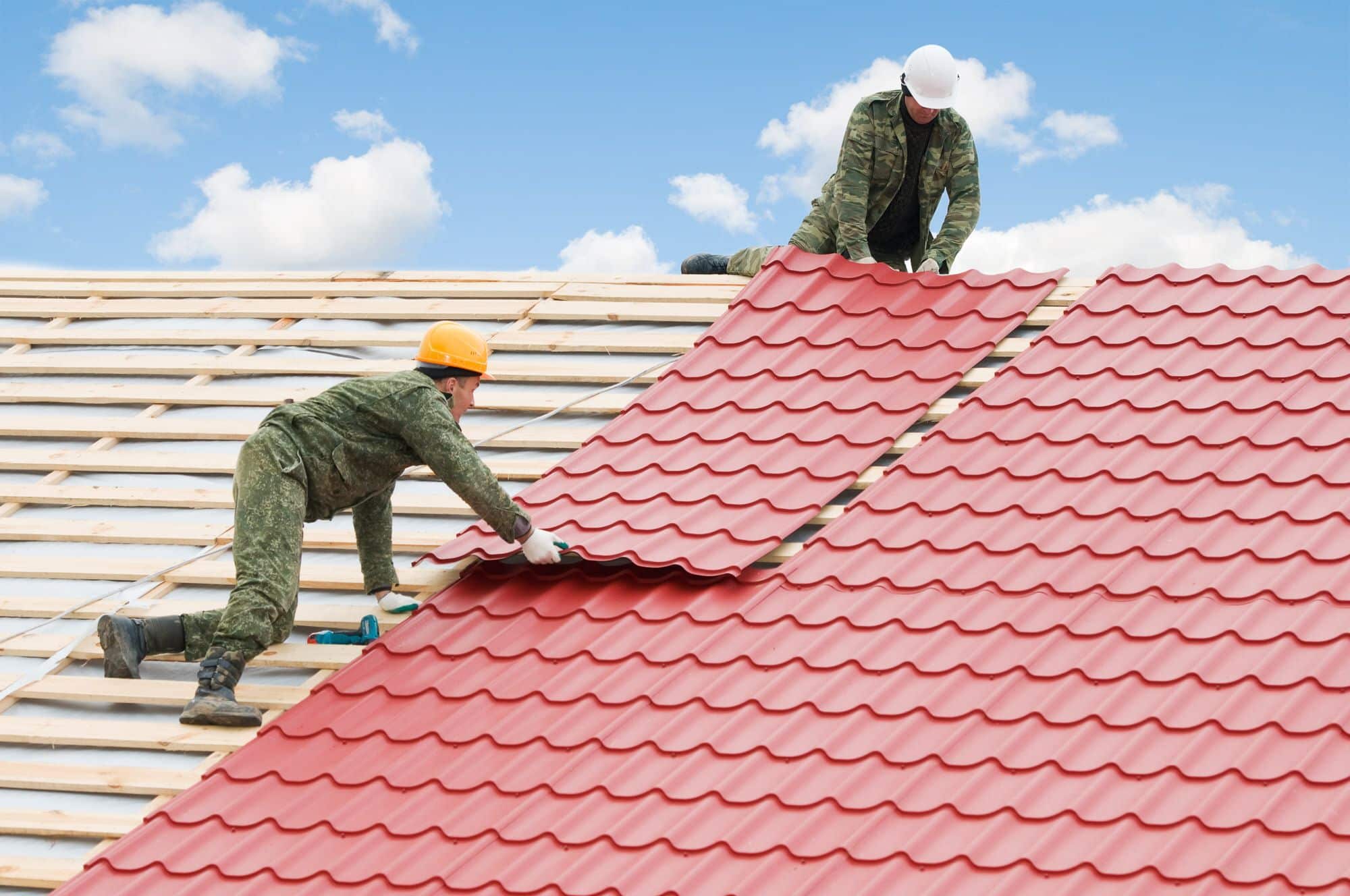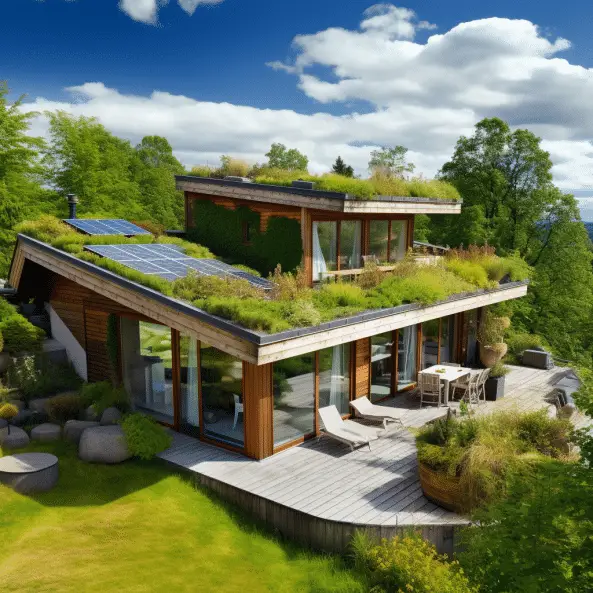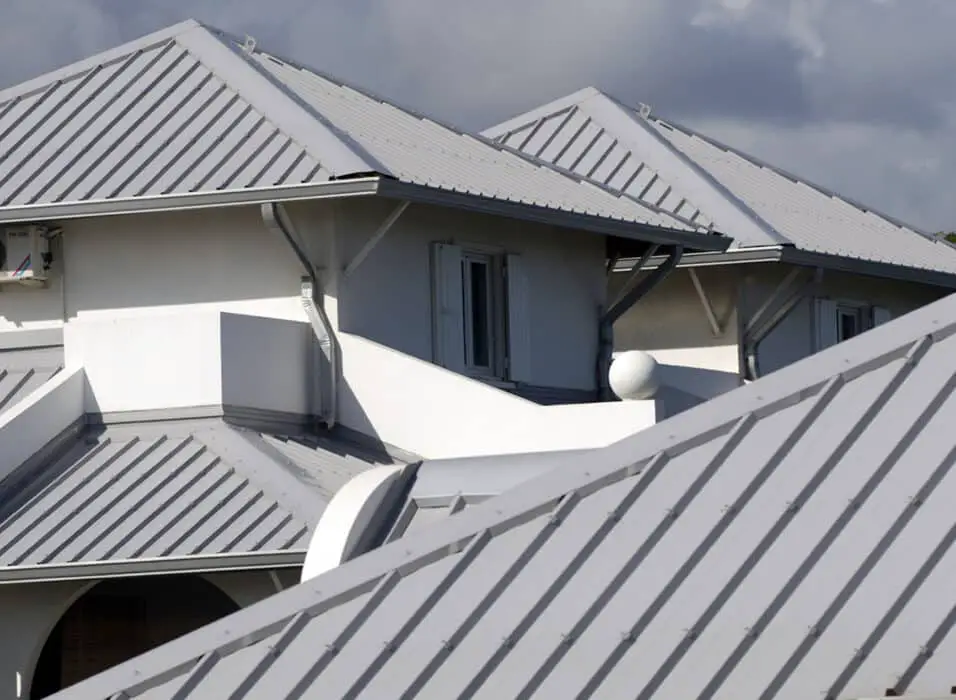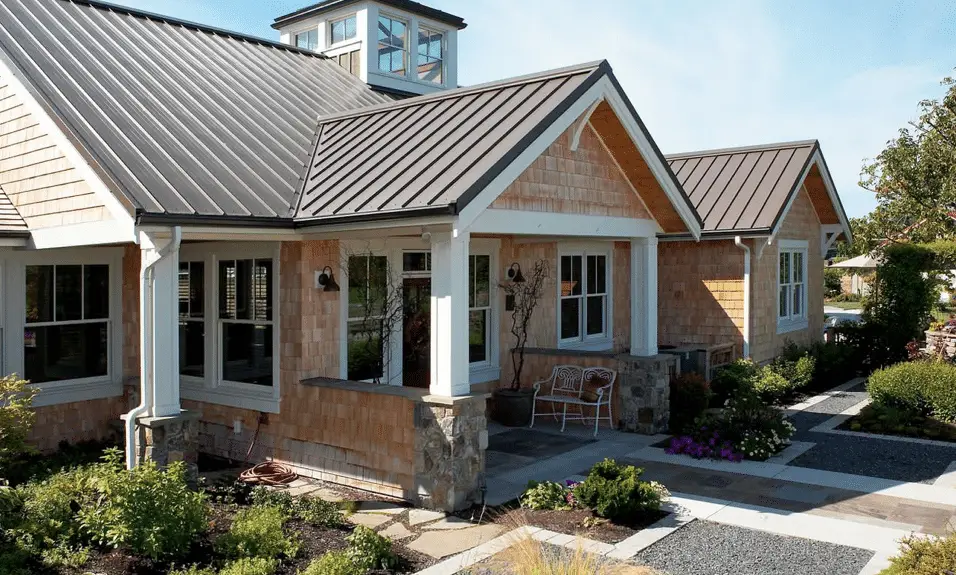What Is The Best Clear Roofing Material
Introduction
What Is The Best Clear Roofing Material: Selecting the best clear roofing material is a decision that goes beyond aesthetics, as it can significantly impact the functionality and comfort of your space. Clear roofing materials are popular for their ability to allow natural light to filter through, creating a bright and inviting atmosphere indoors while maintaining a connection to the outdoors. Whether you’re considering clear roofing for a sunroom, greenhouse, patio cover, or any other space, it’s crucial to understand the various options available and their respective advantages and drawbacks. In this exploration, we will delve into the world of clear roofing materials, offering insights into their characteristics, applications, and factors to consider when making your choice.
Clear roofing materials are diverse, encompassing options such as clear polycarbonate panels, acrylic panels, glass, and even some high-quality plastic films. Each of these materials possesses unique qualities that can impact factors like durability, insulation, and cost-effectiveness. To make an informed decision, it’s essential to weigh these factors against your specific needs and preferences. Additionally, understanding the environmental and maintenance considerations associated with clear roofing materials is crucial, as they can affect your long-term satisfaction with your choice. In this guide, we will delve into the key attributes of each clear roofing material, providing you with the knowledge needed to select the best option for your project.
As we explore the world of clear roofing materials, we will consider their structural and thermal properties, addressing how they affect temperature regulation and energy efficiency within your space. We will also delve into the installation and maintenance requirements of each material, helping you determine which aligns best with your skillset and budget. Furthermore, we will discuss the aesthetic aspects, showcasing how different clear roofing materials can enhance the visual appeal of your structure while facilitating an inviting, sunlit ambiance.
In essence, the choice of the best clear roofing best material is a multifaceted decision, influenced by factors ranging from climate conditions to design preferences. By the end of this exploration, you will be equipped with the knowledge and insights necessary to make an informed choice, ensuring that your clear roofing project meets both your practical needs and your vision for an inviting, naturally illuminated space. So, let’s embark on this journey to discover the ideal clear roofing material for your unique project.
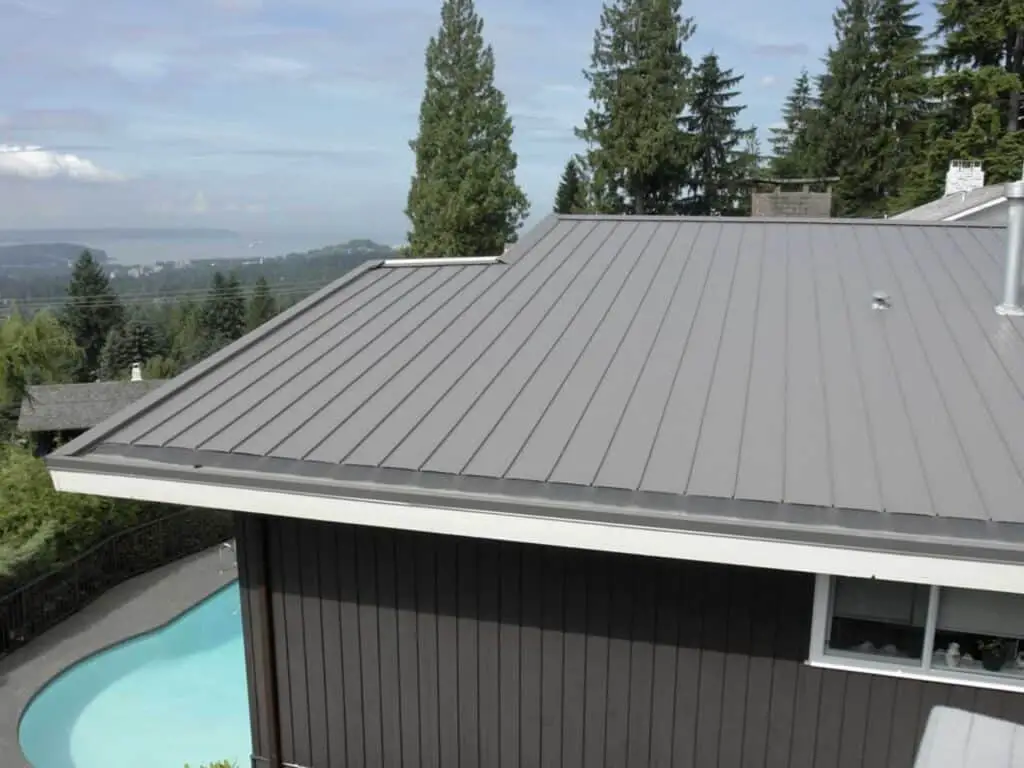
Which is better polycarbonate or PVC?
PVC is a plastic and it is the polymer of vinyl chloride monomer – a plastic formed from chloride. Polycarbonate is the same material used to make bullet proof glass, meaning it is stronger than PVC, resulting in polycarbonate usually carrying a longer warranty than PVC products.
When it comes to choosing between polycarbonate and PVC, it is important to consider various factors to determine which material is better suited for your specific needs. Both polycarbonate and PVC have their own unique properties and advantages, making them suitable for different applications.
Polycarbonate is a durable and versatile material that offers excellent impact resistance. It is known for its high strength and ability to withstand extreme weather conditions, making it ideal for outdoor applications. Polycarbonate is also transparent, allowing for maximum light transmission, which is why it is commonly used in the construction of greenhouses, skylights, and windows.
Furthermore, polycarbonate is lightweight, making it easier to handle and install compared to other materials. It is also highly resistant to chemicals, making it suitable for applications where exposure to corrosive substances is a concern. Additionally, polycarbonate has excellent thermal insulation properties, helping to reduce energy consumption and maintain a comfortable indoor environment.
PVC, on the other hand, is a versatile and cost-effective material that is widely used in various industries. It is known for its excellent chemical resistance, making it suitable for applications where exposure to acids, alkalis, and other corrosive substances is common. PVC is also highly durable and can withstand harsh weather conditions, making it suitable for outdoor applications such as pipes, fittings, and roofing.
In addition to its chemical resistance, PVC is also known for its excellent electrical insulation properties. It is widely used in the electrical industry for cable insulation and wiring applications. PVC is also easy to work with, as it can be easily molded and shaped into different forms. It is also lightweight, making it easier to transport and install.
The choice between polycarbonate and PVC depends on the specific requirements of your application. If you need a material that offers high impact resistance, transparency, and thermal insulation, polycarbonate may be the better choice. On the other hand, if you require excellent chemical resistance, durability, and electrical insulation, PVC may be more suitable. Consider the specific properties and advantages of each material to make an informed decision that best meets your needs.
What is the life of a polycarbonate roof?
10-20 years
Polycarbonate is a popular type of plastic because it is highly resistant to damage. However, climate and location influence the lifespan of polycarbonate roofs. Nonetheless, these roof types have a lifespan of 10-20 years and are an excellent option for your next roofing project.
Introduction:
A polycarbonate roof is a type of roofing material that is made from a durable and lightweight plastic called polycarbonate. It is commonly used in various applications such as greenhouses, patio covers, and skylights. The life of a polycarbonate roof refers to its durability and how long it can last before needing replacement or repairs.
Polycarbonate roofs are known for their exceptional strength and resistance to impact. They are designed to withstand harsh weather conditions, including heavy rain, strong winds, and even hailstorms. This makes them highly durable and long-lasting compared to other roofing materials. The lifespan of a polycarbonate roof can vary depending on several factors, such as the quality of the material, the installation process, and the maintenance practices.
When it comes to the quality of the material, not all polycarbonate roofs are created equal. Higher-quality polycarbonate sheets are typically more durable and have a longer lifespan. These sheets are often treated with UV-resistant coatings to protect them from the damaging effects of the sun’s ultraviolet rays. UV radiation can cause the polycarbonate to become brittle and discolored over time, reducing its lifespan. Therefore, it is important to choose a polycarbonate roof that is specifically designed to withstand UV exposure.
The installation process also plays a crucial role in determining the lifespan of a polycarbonate roof. It is essential to hire a professional roofing contractor who has experience working with polycarbonate materials. Improper installation can lead to leaks, cracks, and other structural issues that can significantly reduce the lifespan of the roof. Additionally, proper installation techniques ensure that the roof is securely fastened and can withstand external forces, such as strong winds or heavy snow loads.
Maintenance is another key factor in prolonging the life of a polycarbonate roof. Regular cleaning and inspection can help identify any potential issues early on and prevent them from escalating into more significant problems. It is recommended to clean the roof periodically using a mild detergent and a soft brush or sponge. Avoid using abrasive materials or harsh chemicals that can damage the surface of the polycarbonate. Additionally, removing any debris or fallen leaves from the roof can prevent clogging of gutters and drainage systems, which can lead to water accumulation and potential damage.
The life of a polycarbonate roof can be extended through proper material selection, professional installation, and regular maintenance. By choosing high-quality polycarbonate sheets, ensuring proper installation techniques, and implementing routine cleaning and inspection, the lifespan of a polycarbonate roof can be maximized. However, it is important to note that the exact lifespan of a polycarbonate roof can vary depending on external factors such as climate, exposure to UV radiation, and the overall care and maintenance provided.
What is the problem with polycarbonate roofs?
Despite the many advantages to using polycarbonate panels as roofing material, there are only a couple of downsides. One downside to polycarbonate sheets is that they are not scratch resistant and denting or scratching on the surface is possible if extra caution and care are not taken.
Polycarbonate roofs have gained popularity as a roofing material due to their durability, lightweight nature, and ability to allow natural light into structures. However, they are not without their problems or drawbacks. Here are some common issues associated with polycarbonate roofs:
Susceptibility to Scratching: Polycarbonate sheets can easily scratch, making them appear dull over time. This is particularly problematic in areas with heavy debris, such as branches or hail.
Yellowing: Polycarbonate can gradually turn yellow or brown when exposed to UV radiation over time. This not only affects the appearance but can also reduce the amount of light transmission through the roof.
Brittleness: While polycarbonate is known for its impact resistance, it can become brittle when exposed to extremely low temperatures. In cold climates, this can lead to cracking or shattering.
Noise: Rain, hail, or other falling objects can create a loud noise when they hit a polycarbonate roof. This can be annoying and disruptive, especially in residential settings.
Condensation: Polycarbonate roofs can be prone to condensation buildup, especially in areas with significant temperature variations between day and night. This condensation can drip onto the interior, causing moisture-related issues.
Limited Heat Insulation: Polycarbonate is not as effective as other roofing materials, like insulated metal panels or traditional shingles, when it comes to heat insulation. This can result in higher energy costs for cooling or heating buildings.
Installation Challenges: Installing polycarbonate roofing requires careful attention to sealing and flashing to prevent leaks. Improper installation can lead to water infiltration.
Maintenance: Polycarbonate roofs may require more frequent cleaning to maintain their clarity and appearance, especially in areas with heavy pollution or tree debris.
Environmental Concerns: Some polycarbonate products may contain chemicals of environmental concern, such as bisphenol A (BPA), which can leach into the environment over time.
To mitigate these issues, it’s essential to choose high-quality polycarbonate materials, ensure proper installation, and consider the climate and intended use of the structure when deciding on roofing materials. Additionally, regular maintenance and cleaning can help prolong the life and functionality of polycarbonate roofs.
What is better than a polycarbonate roof?
In terms of estimated lifespan, glass roofs have the edge over polycarbonate varieties too; glass can be expected to last for more than 20 years, whilst polycarbonate roofs usually last between 10 and 15.
Introduction:
A polycarbonate roof is a popular choice for many homeowners due to its durability, versatility, and cost-effectiveness. However, there are several alternatives that may be considered better depending on specific needs and preferences. In this article, we will explore some options that can potentially surpass the benefits offered by a polycarbonate roof.
Alternative 1: Metal Roofing
Metal roofing is often regarded as a superior choice to polycarbonate roofs in terms of longevity and strength. Metal roofs are known for their exceptional durability, as they can withstand harsh weather conditions such as heavy rain, strong winds, and even hailstorms. Additionally, metal roofs have a longer lifespan compared to polycarbonate roofs, making them a more sustainable and cost-effective option in the long run. Moreover, metal roofs offer excellent energy efficiency, reflecting sunlight and reducing heat absorption, which can contribute to lower cooling costs.
Alternative 2: Clay or Concrete Tiles
Clay or concrete tiles are another alternative that can be considered better than a polycarbonate roof, especially in terms of aesthetics and insulation. These tiles provide a classic and elegant look to any home, enhancing its curb appeal. Additionally, clay or concrete tiles offer superior insulation properties, keeping the interior of the house cooler in hot climates and warmer in colder regions. This can result in energy savings and a more comfortable living environment.
Alternative 3: Green Roofs
For those seeking a more environmentally friendly option, green roofs can be a better choice than polycarbonate roofs. Green roofs consist of a layer of vegetation, providing numerous benefits such as improved air quality, reduced stormwater runoff, and enhanced insulation. They also contribute to urban biodiversity and can create a peaceful and aesthetically pleasing environment. While green roofs require additional maintenance and installation costs, their long-term advantages make them a compelling alternative.
While polycarbonate roofs have their advantages, there are several alternatives that can be considered better depending on specific requirements. Metal roofing offers exceptional durability and energy efficiency, while clay or concrete tiles provide aesthetic appeal and insulation properties. Green roofs, on the other hand, offer environmental benefits and a unique living experience. Ultimately, the choice of a roofing material should be based on individual preferences, budget, and the specific needs of the property.
When it comes to clear roofing materials, there are several options available in the market, each with its own unique characteristics and properties. These materials differ in terms of durability and longevity, which are crucial factors to consider when selecting the best option for a specific project or location.
Polycarbonate is one of the most popular clear roofing materials due to its exceptional durability. It is highly resistant to impact, making it ideal for areas prone to hail or heavy storms. Additionally, polycarbonate has a long lifespan, often lasting for decades without significant deterioration. Its UV protection coating further enhances its longevity by preventing yellowing or discoloration over time.
Acrylic is another clear roofing material known for its durability. It is resistant to cracking and fading, making it a reliable choice for long-term use. However, compared to polycarbonate, acrylic may have a slightly shorter lifespan and is more prone to scratching. Regular maintenance and cleaning are essential to preserve its clarity and extend its longevity.
What are the key factors to consider when selecting the best clear roofing material for a specific project or location?
When selecting the best clear roofing material for a specific project or location, there are several key factors that need to be considered. Firstly, it is important to assess the climate and weather conditions of the area where the roofing material will be installed. Different materials have varying resistance to UV radiation, extreme temperatures, and moisture, so choosing a material that can withstand the specific environmental conditions is crucial for long-term durability and longevity.
Another important factor to consider is the intended use of the space beneath the clear roofing. If the area will be used for commercial purposes or as a living space, it is essential to select a material that provides adequate insulation and soundproofing properties. Some clear roofing materials offer superior insulation, reducing heat transfer and minimizing energy consumption for heating or cooling the space.
Additionally, the aesthetic appeal and architectural style of the building should be taken into account. Clear roofing materials come in various designs and finishes, such as corrugated panels, polycarbonate sheets, or glass panels. Choosing a material that complements the overall design and enhances the visual appeal of the structure is important for creating an attractive and cohesive look.
How do the various clear roofing materials differ in terms of durability and longevity?
Various clear roofing materials differ in terms of durability and longevity based on their composition, resistance to environmental factors, and maintenance requirements. Here’s a comparison of some common clear roofing materials:
Polycarbonate: Polycarbonate sheets are known for their durability and impact resistance. They can withstand hail, falling debris, and heavy winds. However, they are susceptible to scratching and yellowing over time due to UV exposure. With proper care and UV-resistant coatings, they can last anywhere from 10 to 20 years or more.
Acrylic: Acrylic roofing panels are less prone to yellowing compared to polycarbonate. They are also relatively durable and have good impact resistance. Acrylic roofs can last around 15 to 30 years or more, depending on maintenance and exposure to environmental factors.
Fiberglass: Fiberglass roofing panels are lightweight and offer good UV resistance. They are less likely to yellow compared to some other plastics. Properly maintained fiberglass roofs can last 20 to 25 years or longer.
Glass: Glass roofing is known for its longevity and resistance to UV degradation and scratching. It can last 30 years or more with proper maintenance. However, glass is heavy and can be susceptible to breakage if impacted.
PVC: PVC (polyvinyl chloride) roofing is not completely clear but can have translucent properties. It is durable and highly resistant to UV radiation, chemicals, and moisture. PVC roofing can last 20 to 30 years or more.
Polyester: Polyester roofing panels are less common but are known for their durability and resistance to UV radiation. They are often used in industrial applications and can last 20 to 30 years.
Teflon-Coated Fabric: Some translucent roofing materials use Teflon-coated fabric. These are highly durable, resistant to UV radiation, and lightweight. Teflon-coated fabric roofing can last 20 to 30 years or more.
It’s important to note that the actual lifespan of clear roofing materials can vary widely depending on factors such as climate, installation quality, maintenance, and the specific product’s quality. Regular cleaning, proper sealing, and the use of UV-protective coatings can help extend the life of these materials.
When choosing a clear roofing material, consider the intended use, budget, climate, and maintenance capabilities, as well as the manufacturer’s warranty, to make an informed decision about the most suitable option for your specific application.
What are the key factors to consider when selecting the best clear roofing material for a specific project or location?
Selecting the best clear roofing material for a specific project or location involves careful consideration of various factors to ensure it meets the project’s requirements and performs well in the given environment. Here are the key factors to consider:
Climate and Weather Conditions:
Evaluate the local climate, including temperature extremes, rainfall, hail, and snow loads. Choose a material that can withstand the specific weather conditions in the area.
Light Transmission:
Determine the desired amount of natural light. Some materials are more transparent than others, so select one that provides the appropriate level of light for the intended use of the space.
Durability and Longevity:
Consider the expected lifespan of the roofing material. Materials like glass and acrylic tend to have longer lifespans than polycarbonate, for example.
Impact Resistance:
Assess the risk of falling debris or hail in the area. Choose a roofing material with adequate impact resistance to prevent damage.
UV Resistance:
Determine the level of UV exposure. Some materials, like acrylic and fiberglass, have better UV resistance and are less likely to yellow or become brittle over time.
Insulation and Energy Efficiency:
Consider the energy efficiency of the material. Some clear roofing options come with insulation properties that can help regulate temperatures and reduce heating or cooling costs.
Maintenance Requirements:
Think about the maintenance efforts required. Some materials may need more frequent cleaning or protective coatings to maintain their clarity and performance.
Installation:
Ensure that the chosen material is suitable for the installation method and structure type. Some materials are better suited for certain applications, such as residential vs. commercial or flat vs. sloped roofs.
Cost and Budget:
Evaluate the budget for the project. Clear roofing materials can vary significantly in cost, so choose one that fits within the budget constraints.
Code and Permit Requirements:
Check local building codes and permit requirements to ensure compliance with regulations related to roofing materials and installation methods.
Aesthetic Considerations:
Consider the visual appearance and style of the roofing material. Some materials may be more visually appealing for specific architectural designs.
Environmental Impact:
Assess the environmental impact of the material. Consider factors such as recyclability, sustainability, and whether it contains any hazardous components.
Warranty and Manufacturer Support:
Review the warranties offered by the manufacturer and their reputation for customer support and product quality.
Consult with Experts:
If you’re uncertain about the best choice for your specific project, consult with roofing experts or architects who can provide guidance based on their experience and knowledge of local conditions.
By carefully considering these factors, you can choose the best clear roofing material that meets the needs of your project and location, ensuring long-term performance and satisfaction.
Are there any specific clear roofing materials that offer superior insulation properties?
Clear roofing materials are generally not known for their insulation properties, as their primary function is to allow natural light into a space while offering protection from the elements. However, there are some clear roofing materials that provide better insulation properties than others. Here are a few options:
Multi-Wall Polycarbonate: Multi-wall polycarbonate panels consist of multiple layers with air pockets in between. These air pockets act as insulating barriers, helping to regulate temperature to some extent. They can offer better thermal insulation compared to single-layer polycarbonate sheets.
Thermally Insulated Panels: Some manufacturers offer clear roofing panels specifically designed for insulation. These panels typically have a core made of foam insulation sandwiched between two layers of clear material. They provide improved thermal performance while still allowing natural light.
Double-Glazed or Triple-Glazed Glass: Clear glass roofing with double or triple glazing offers better insulation properties than single-pane glass. The additional layers of glass and the air or gas-filled gaps between them reduce heat transfer, providing some degree of thermal insulation.
UV-Blocking Coatings: Some clear roofing materials come with UV-blocking coatings that help reduce heat buildup in the space below. While not insulation in the traditional sense, these coatings can help make the space more comfortable by blocking a portion of the sun’s heat.
Shade Structures: Another way to improve insulation under clear roofing is to incorporate shade structures, such as retractable awnings, shades, or blinds. These can help control the amount of sunlight and heat that enters the space.
It’s essential to note that while these clear roofing options can offer improved insulation compared to standard clear materials, they may not provide the same level of insulation as traditional roofing materials like insulated metal panels, asphalt shingles with insulation underneath, or roofing membranes with high insulation values.
When considering clear roofing materials for a project where insulation is a concern, consult with manufacturers and roofing experts to select a product that meets your specific insulation requirements. Additionally, you can complement clear roofing with other insulation methods, such as using thermal curtains or adding insulation in the space between the roofing and the ceiling to enhance energy efficiency and comfort.
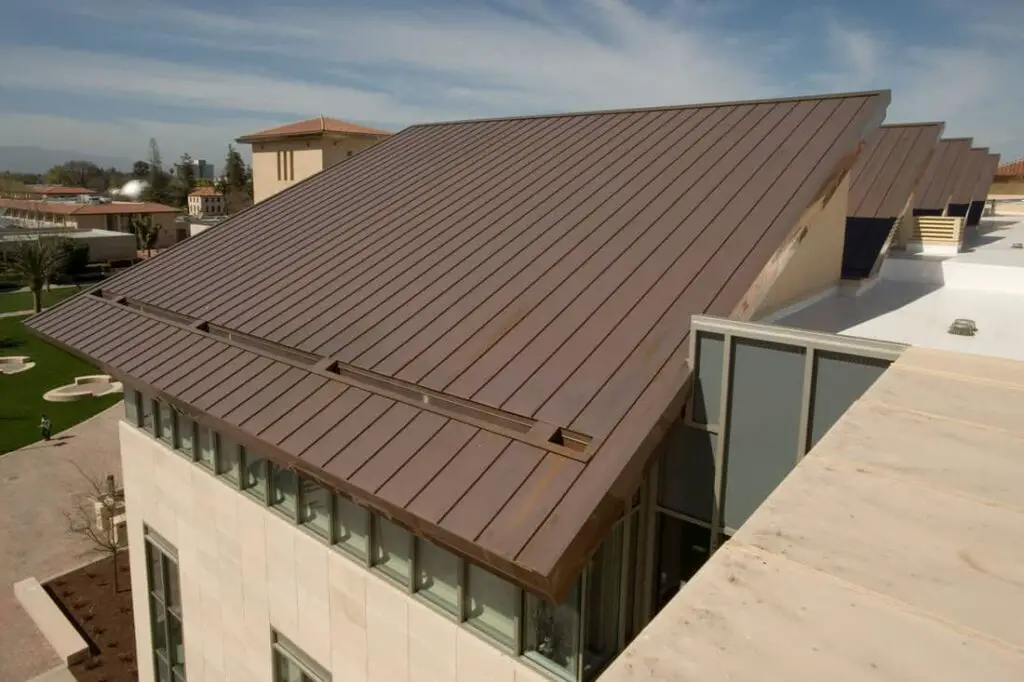
Conclusion
After conducting extensive research and analysis, it can be concluded that determining the best clear roofing material is not a straightforward task. The choice of the ideal roofing material depends on various factors such as the specific requirements of the project, budget constraints, and personal preferences. However, several materials have emerged as popular options in the market, each with its own set of advantages and disadvantages.
One of the most commonly recommended clear roofing materials is polycarbonate. This thermoplastic material offers exceptional durability and impact resistance, making it suitable for areas prone to extreme weather conditions. Additionally, polycarbonate roofing provides excellent UV protection, preventing harmful rays from entering the space below. Its lightweight nature also makes it easier to install and transport, reducing labor and transportation costs. However, it is important to note that polycarbonate may not be the most cost-effective option for all projects, as it tends to be more expensive than other materials.
Another popular choice for clear roofing is acrylic. Acrylic sheets are known for their high transparency, allowing ample natural light to enter the space. This material is also highly resistant to yellowing and offers good impact resistance. Acrylic roofing is relatively lightweight and easy to handle, making it a suitable option for DIY enthusiasts. However, it is worth mentioning that acrylic may not be as durable as polycarbonate and can be more prone to scratching.
Lastly, glass is a classic option for clear roofing, known for its timeless aesthetic appeal. Glass roofs provide unparalleled clarity and can enhance the overall visual appeal of a structure. They are highly durable and resistant to scratches, ensuring a long lifespan. However, glass roofing can be significantly heavier and more expensive than other materials, requiring additional structural support and careful installation. Moreover, glass is more prone to shattering under extreme weather conditions, which may be a concern in certain areas.
The best clear roofing material ultimately depends on the specific needs and preferences of the project. Polycarbonate, acrylic, and glass are all viable options, each offering unique advantages and disadvantages. It is crucial to carefully consider factors such as durability, cost, transparency, and ease of installation before making a decision. Consulting with roofing professionals and considering the specific requirements of the project will help ensure the selection of the most suitable clear roofing material.



